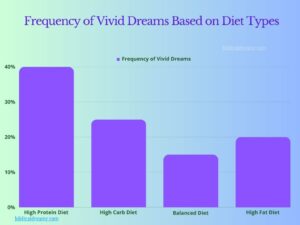Traumatic experiences can leave a lasting imprint not only on our waking lives but also on our dreams. For many, trauma is revisited night after night through intense, often distressing dreams that replay fragments of painful memories.

These dreams can serve as a window into the subconscious, reflecting unresolved emotions and sometimes even aiding in the processing of trauma. Whether you’re experiencing recurrent nightmares or vivid, fragmented dream narratives, understanding the link between trauma and dreams is crucial for healing and recovery.
Key Takeaways
- Recurrent Nightmares: Up to 70% of individuals with post-traumatic stress disorder (PTSD) report recurring nightmares that mirror traumatic events. Source
- Emotional Processing: Traumatic dreams can help process overwhelming emotions, though they may initially intensify distress.
- Therapeutic Potential: Techniques like imagery rehearsal therapy and EMDR leverage dream analysis to help patients reframe and lessen the impact of traumatic memories.
- Individual Variability: The nature and intensity of trauma-related dreams vary widely, influenced by factors such as the type of trauma, personal resilience, and treatment history.
Understanding Trauma and Its Effects
Trauma results from deeply distressing or disturbing events that overwhelm an individual’s ability to cope. It can stem from various sources, including accidents, violence, natural disasters, or prolonged stress.
The impact of trauma is not limited to waking hours—our brains continue to process these intense experiences during sleep, often leading to disruptive dream patterns.
- Emotional Overload: Traumatic events flood the brain with stress hormones, which can impair the natural process of memory consolidation.
- Memory Fragmentation: Rather than being neatly stored, traumatic memories may remain fragmented and intrusive, frequently surfacing during sleep.
Traumatic Dreams: Characteristics and Patterns
Dreams influenced by trauma tend to be markedly different from typical dream experiences. They often display the following traits:
- Repetition: Many trauma survivors experience recurrent nightmares, where the traumatic event or its symbolic representation is relived repeatedly. Studies indicate that nearly 70% of PTSD patients suffer from recurring nightmares. Source
- Intensity and Vividness: Traumatic dreams are usually more intense, with sensory details that can make them feel startlingly real.
- Fragmentation: Unlike coherent narratives, these dreams may be disjointed, mirroring the fragmented nature of traumatic memories.
- Emotional Charge: High levels of fear, sadness, or anger are common, reflecting the unresolved emotional distress of the trauma.
The Role of Dreams in Trauma Processing
Dreams are not merely random by-products of sleep—they play a vital role in emotional regulation and memory processing. In the context of trauma:
- Emotional Reprocessing: By reactivating and reworking traumatic memories during REM sleep, the brain attempts to integrate these experiences, which can gradually reduce their emotional intensity.
- Problem Solving: Some theories suggest that dreams help reframe traumatic events, allowing individuals to approach their distress from a new perspective.
- Adaptive Mechanism: Although distressing at times, traumatic dreams might be the brain’s way of processing pain and ultimately promoting healing.
Therapeutic Approaches to Trauma-Related Dreams
Recognizing the impact of trauma on dreams has led to specialized therapeutic interventions aimed at reducing the frequency and intensity of traumatic nightmares:
Get instant dream insights with our Free Dream Interpretation App
- Imagery Rehearsal Therapy (IRT): Patients are guided to rewrite their nightmares during waking hours, creating a new, less distressing narrative that can replace the original dream.
- Eye Movement Desensitization and Reprocessing (EMDR): This technique helps reprocess traumatic memories, which can, in turn, reduce the occurrence of trauma-related dreams.
- Cognitive Behavioral Therapy (CBT): Focuses on restructuring negative thought patterns and improving sleep hygiene to alleviate sleep disturbances linked to trauma.
Related: Dreams of Deception
Statistical Insights and Research
- Nightmare Prevalence: Research shows that up to 70% of individuals with PTSD experience recurrent nightmares, a stark contrast to the general population where only 2–5% report frequent nightmares. Source
- Sleep Disturbance: Studies have found that trauma can reduce overall sleep quality by fragmenting sleep stages, particularly diminishing REM sleep—a critical phase for processing emotions.
- Therapy Outcomes: Clinical trials of IRT have reported a reduction in nightmare frequency by 50–60% in trauma survivors, underscoring the efficacy of targeted dream therapy. Source
Practical Strategies for Managing Traumatic Dreams
If you’re struggling with trauma-related dreams, consider the following strategies:
- Consult a Professional: Work with a therapist who specializes in trauma and sleep disorders to develop a tailored treatment plan.
- Establish a Bedtime Routine: Consistent sleep schedules, a calming environment, and relaxation techniques can improve overall sleep quality.
- Dream Journaling: Recording your dreams can help you identify patterns, track progress in therapy, and provide valuable insights during sessions.
- Mindfulness Practices: Techniques such as meditation and deep breathing exercises can help lower overall stress and reduce the frequency of distressing dreams.
Conclusion
Traumatic experiences shape not only our waking lives but also our nocturnal narratives. Dreams and trauma are intricately linked, with traumatic experiences often surfacing as vivid, recurrent nightmares that reflect unresolved emotions.
While these dreams can be distressing, they also offer a unique window into the subconscious and hold potential for therapeutic intervention. By embracing targeted treatments and healthy sleep practices, it is possible to mitigate the disruptive effects of trauma on dreams and pave the way for emotional healing.





